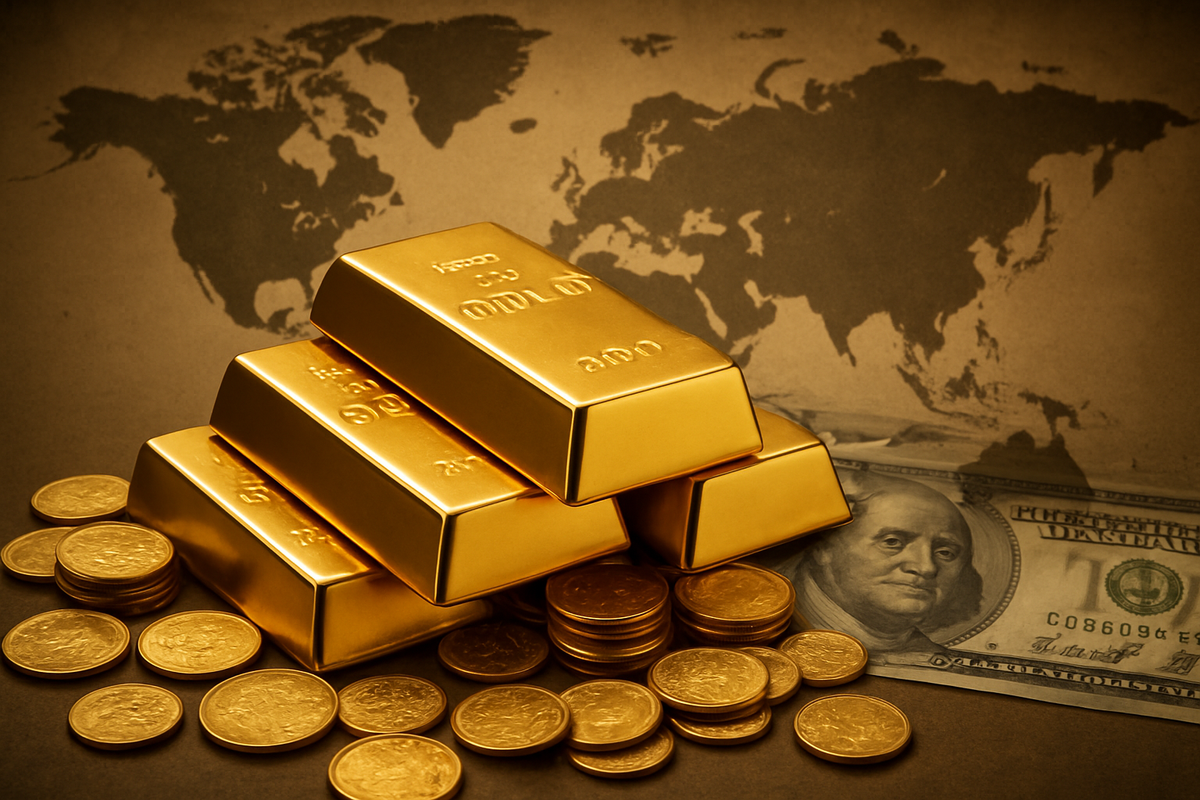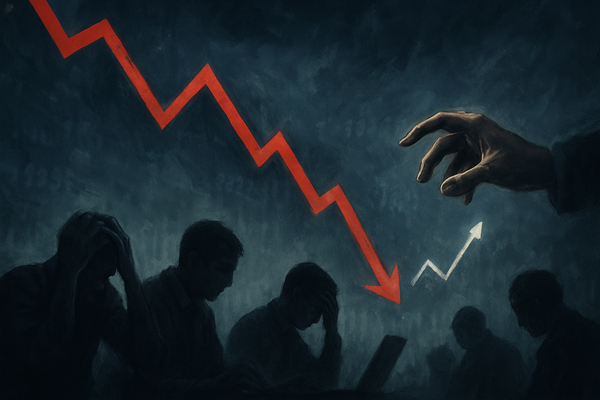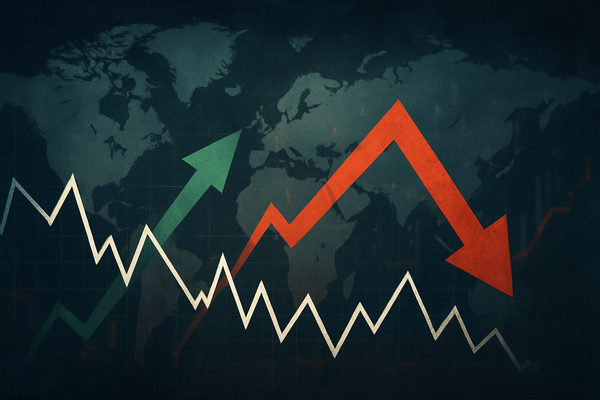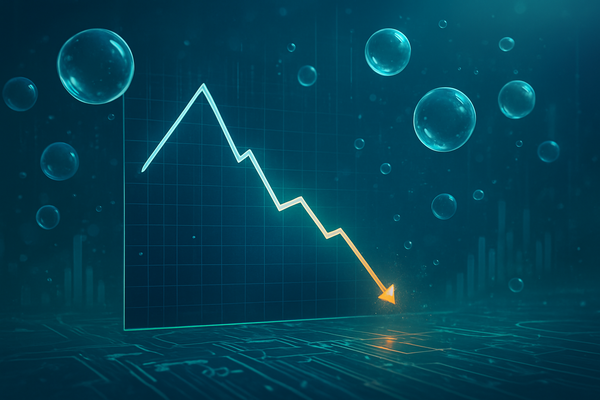The Golden Reset: Central Banks Prepare to Reprice Gold, Signaling a New Era Beyond Dollar Dominance

The global financial system stands at a critical juncture, with an increasing chorus of experts suggesting that central banks worldwide are strategically moving to reprice their gold reserves, a maneuver that could fundamentally reshape monetary policy and potentially usher in the twilight of the U.S. dollar's long-standing reign as the world's primary reserve currency. This seismic shift, driven by geopolitical tensions, escalating sovereign debt, and a concerted effort towards de-dollarization, signals a profound re-evaluation of global financial architecture. As of late 2025, the implications are vast, promising a new era where gold assumes a more central role, challenging established norms and creating both unprecedented opportunities and significant risks across financial markets.
This strategic pivot is not merely an academic exercise but a tangible trend evident in the unprecedented pace of central bank gold accumulation, which has seen net purchases exceeding 1,000 tonnes annually in both 2022 and 2023, continuing robustly into 2024 and 2025. Central banks globally now hold approximately 36,700 tonnes of gold, representing about 27% of foreign central bank reserves – the highest percentage in nearly three decades. This marks a historic moment where central bank gold holdings have surpassed their U.S. Treasury holdings, indicating a fundamental shift in reserve asset preferences. The concept of "gold repricing" involves central banks revaluing their gold reserves from historical costs to current market prices, a move that could unlock significant unrealized gains, bolster national balance sheets, and provide substantial backing for currencies in a more multipolar financial world. Such a revaluation, particularly by a major holder like the U.S., could trigger a cascading effect, leading to improved debt-to-gold ratios, a rebalancing of global financial power, and enhanced financial stability. Market analysts are already projecting gold price increases of 50-200% following any significant U.S. revaluation, with gold prices already soaring past $3,500 per ounce in early September 2025 and even touching $4,000 per ounce by October 2025, largely due to this sustained institutional buying.
The Shifting Sands of Global Finance: Gold's Ascent and the Dollar's Challenge
The narrative of central banks preparing to reprice gold is intrinsically linked to the growing skepticism surrounding the U.S. dollar's (USD) long-term dominance. For decades, the dollar has served as the world's reserve currency, facilitating international trade and finance. However, a confluence of factors is now challenging this hegemony. Geopolitical tensions, particularly the weaponization of the financial system through sanctions (as seen with Russia's frozen dollar-denominated reserves in 2022), have prompted nations to actively seek diversification. This has spurred significant de-dollarization efforts by countries like China and the BRICS bloc, which are actively depleting dollar reserves and accumulating alternative assets, primarily gold. Concerns over unsustainable U.S. debt levels, rising interest payments, and the ballooning national debt are further eroding confidence in U.S. Treasuries as the ultimate safe haven, leading central banks to question their long-term safety and liquidity.
The timeline leading to this moment has been characterized by a steady decline in the dollar's share of global foreign exchange reserves, which hit around 57.74% in Q1 2025, with some experts predicting a fall below 50% by 2034 if current trends persist. By October 2025, gold had already surpassed the Euro (EUR) as the second-largest global reserve asset, trailing only the U.S. dollar, with gold making up 20% of global official reserves compared to the Euro's 16% and the dollar's 46%. This shift underscores a fundamental re-evaluation of reserve asset preferences. Key players involved in this evolving landscape include the central banks of major economies, particularly those in emerging markets, which are diversifying their reserves away from USD. Institutions like the Bank for International Settlements (BIS) and organizations like the Gold Anti-Trust Action Committee (GATA) are also influential, with the latter often highlighting alleged market manipulation in precious metals. Initial market reactions have seen gold prices reaching unprecedented highs, reflecting increased institutional demand and a flight to safety amidst global uncertainties.
Adding to the complexity is the persistent debate surrounding gold price dips, often viewed by some experts as orchestrated market manipulation rather than natural corrections. Advocates like Chris Powell of GATA cite historical instances, such as the Hunt Brothers' silver corner and JPMorgan Chase & Co.'s (NYSE: JPM) spoofing convictions, as evidence of manipulation in the precious metals markets. Techniques like high-frequency trading, AI-driven algorithms, and the use of gold swaps by entities like the BIS are believed to be employed to suppress prices. The "paper gold market," encompassing futures contracts and derivatives, significantly dwarfs the physical market, allowing large players to influence prices in ways that don't always reflect underlying supply and demand fundamentals. The motive, according to some, is to control gold prices to protect the dominance of fiat currencies and prevent gold from fully asserting its role as an alternative monetary system. For long-term investors, however, these perceived manipulations are often seen as strategic buying opportunities, allowing them to accumulate gold at discounted prices before its inevitable appreciation driven by fundamental shifts in global finance.
Corporate Fortunes in a Golden Era: Winners and Losers
The potential repricing of gold and the gradual erosion of dollar dominance will inevitably create a distinct divide between corporate winners and losers across various sectors. Companies directly involved in gold mining and exploration stand to gain significantly. Major gold producers like Barrick Gold Corporation (NYSE: GOLD) and Newmont Corporation (NYSE: NEM) would see the value of their reserves and future production skyrocket, leading to increased revenues, higher profit margins, and potentially enhanced shareholder returns. Junior mining companies, often with high-leverage to rising gold prices, could experience exponential growth and attract substantial investment. Similarly, precious metals refiners and dealers would see a surge in demand and activity.
On the flip side, financial institutions heavily invested in U.S. dollar-denominated assets, particularly U.S. Treasuries, could face headwinds. Banks with significant exposure to dollar-based sovereign debt might see the value of their holdings decline, impacting their balance sheets. Companies reliant on stable and predictable currency exchange rates for international trade, especially those with extensive supply chains denominated in USD, could experience increased volatility and higher hedging costs. Furthermore, technology companies that rely on a globally dominant, stable dollar for seamless international transactions and sourcing components from abroad might face increased operational complexities and currency risks. Companies like Apple Inc. (NASDAQ: AAPL) or Microsoft Corporation (NASDAQ: MSFT), with vast global operations, would need to adapt their treasury strategies to navigate a more multipolar currency landscape, potentially increasing their gold exposure or diversifying into other reserve currencies. Conversely, companies that proactively diversify their asset holdings and embrace gold as a strategic reserve could find themselves in a more resilient position.
A New Global Monetary Order: Broader Implications and Historical Parallels
The repricing of gold and the challenge to dollar dominance are not isolated events but fit into a broader trend of global financial rebalancing. This movement towards a multipolar currency system is a direct response to the vulnerabilities exposed by an over-reliance on a single reserve currency, particularly in a geopolitical environment marked by increasing fragmentation. The potential ripple effects on competitors and partners are substantial. Nations and corporations that have diversified their reserves into gold or other major currencies like the Euro or Chinese Yuan (CNY) will likely gain economic leverage, while those heavily tethered to the dollar may experience diminished influence. This shift could accelerate the development of alternative international payment systems, further reducing the dollar's transactional role.
Regulatory and policy implications are equally profound. Governments and central banks will need to re-evaluate their reserve management strategies, potentially leading to new international agreements or frameworks governing the role of gold and other reserve assets. The International Monetary Fund (IMF) could play a crucial role in facilitating this transition, or it might find its influence challenged by emerging alternative financial blocs. Historically, shifts in global reserve currencies have often coincided with major geopolitical realignments and economic power transitions. The decline of the British Pound (GBP) after World War II and the rise of the U.S. dollar serves as a powerful precedent, illustrating how economic might and military power are intertwined with currency dominance. The current situation draws parallels, with the rise of Asian economies and the collective efforts of BRICS nations signaling a similar epochal change. The ongoing central bank gold accumulation, unseen since the Bretton Woods era, underscores the gravity of this moment, suggesting a deliberate move to re-establish a more tangible, less politically vulnerable monetary anchor.
The Road Ahead: Navigating a Multipolar Financial Landscape
Looking ahead, the short-term possibilities point towards continued volatility in currency markets and sustained upward pressure on gold prices. Investors can expect gold to remain a highly sought-after safe-haven asset, particularly during periods of geopolitical uncertainty or economic instability. In the long term, the global financial system is likely to evolve into a more diversified, multipolar structure, where gold plays a more prominent role alongside a basket of major currencies. This could lead to a reduction in systemic risk, as no single currency holds disproportionate sway.
Strategic pivots will be essential for both nations and corporations. Central banks will continue to diversify their reserves, potentially exploring new asset classes or increasing their holdings of other strong currencies. Corporations will need to implement robust currency hedging strategies and consider diversifying their treasury holdings beyond traditional dollar-denominated assets. Emerging market opportunities may arise as these economies, often with significant gold reserves, gain greater financial autonomy and influence. Challenges will include navigating increased currency volatility, adapting to new trade settlement mechanisms, and understanding the evolving regulatory landscape. Potential scenarios range from a gradual, managed transition to a more abrupt and disruptive shift, depending on geopolitical events and the pace of central bank actions. A "gold standard light" or a gold-backed digital currency could even emerge as a long-term possibility, offering a stable alternative in a fractured financial world.
The Golden Horizon: A Summary of Transformation and Future Watchpoints
In summary, the expert view that central banks are preparing to reprice gold and potentially end the dollar's dominance is gaining significant traction, backed by observable trends in central bank gold accumulation and strategic de-dollarization efforts. This represents a fundamental re-evaluation of global monetary assets, driven by geopolitical realities, sovereign debt concerns, and a desire for greater financial autonomy. Gold's elevation to a more central role is not just a theoretical concept but a tangible shift impacting market dynamics, with gold prices soaring to unprecedented levels. The notion of price dips as market manipulation, while contentious, highlights the underlying tension between physical gold's intrinsic value and the paper market's influence, often presenting strategic buying opportunities for long-term investors.
Moving forward, the market will likely be characterized by increased volatility and a continued re-calibration of asset allocations. Investors should watch for further announcements from central banks regarding their gold holdings and reserve management strategies. Geopolitical developments, particularly those involving major economic blocs like BRICS, will also be crucial indicators of the pace and direction of de-dollarization. The performance of gold mining companies (e.g., Barrick Gold Corporation (NYSE: GOLD), Newmont Corporation (NYSE: NEM)) and the evolving strategies of major financial institutions (e.g., JPMorgan Chase & Co. (NYSE: JPM)) will offer insights into corporate adaptation. The long-term significance of this transformation lies in its potential to create a more resilient and equitable global financial system, less susceptible to the unilateral actions of any single nation. As the world moves towards a multipolar monetary order, gold is poised to reclaim its ancient role as a universal store of value and a cornerstone of global finance.
This content is intended for informational purposes only and is not financial advice



